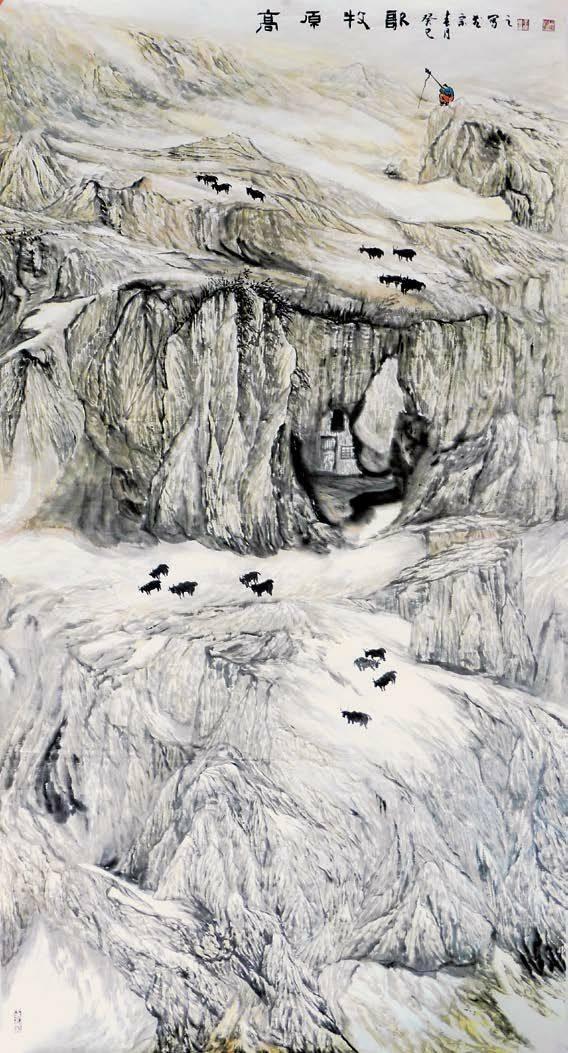李宗武作品欣赏
Li Zongwu was born in Huining, Gansu Province in 1972. He graduated from Shihezi University in 1997 and Northwest Normal University in 2003. He continued his study at Academy of Art & Design, Tsinghua University in 2011. He learned from famous painters Yan Han, Huo Chunyang, Chang Baoli and Zhang Lichen. Currently he is a member of China Artist Association, a director of Guansu Artists Association, the executive chief editor of The Western Art, and the president of Research Institute of the Loess Plateau School, etc. As a representative painter of the Loess Plateau School, he has deveted himself to the research of landscape paintings with the themes of Loess Plateau for more than 20 years and put forward the formation theory of Loess Plateau School, which filled in the blank of Loess Plateau themes in history and have profound influence in Chinese painting.
李宗武,1972年生于甘肃会宁。1997年毕业于石河子大学,2003年毕业于西北师范大学,2011年就读于清华大学美术学院,师从著名画家彦涵、霍春阳、常保立、张立辰诸先生。现为中国艺术家协会会员,甘肃国画院院务委员,甘肃省美协理事,《西部美术报》执行主编,《文艺大观》杂志社执行副主编,甘肃省会宁画院常务副院长,清华大学美术学院写生基地画家,中国画院画家,黄土高原画派研究院院长。
黄土高原画派代表性画家李宗武,基于对传统文化的学习和探索,以及“笔墨当随时代”的认识,20多年来一直致力于对黄土高原题材的山水画探索,同时积极从古人和历代大师的作品中借鉴学习,提出黄土高原画派形成的理论。该理论体系的提出,填补了中国绘画史上对黄土高原题材的山水画的不足,其意义是深远而卓越的。
李宗武的作品是从传统走向现代的黄土高原,他采用全景式的构图和湿画法,以及点、线、面,色融为一体的笔法,很好地表现了黄土高原土质地貌的特征,也成功解决了历代画家在土质山水画上笔墨语言的问题,反映出黄土高原的浑厚博大、悲壮苍凉,给人以痛快淋漓之感。
黄土高原画派的形成,得到专家和美术界的高度评价。他们认为,扎根大西北黄土高原并以陇原大地为依托的黄土高原画派,是继陕西黄土画派之后又一个令人瞩目的山水画学术流派,它是以黄土高原题材的山水画为主,以陇原大地上关注并创造的山水画家群落为基础,他们的作品形成了苍凉豪放、浑厚质朴、磅礴大美和勃勃向上的现实主义风格。
- 世界知识画报·艺术视界的其它文章
- 柏林艺术周“永远画下去”
- 赵志刚作品欣赏
- 李光辉作品欣赏
- 李继卿作品欣赏
- 寻找中国当代艺术之路
- 老甲的感觉

